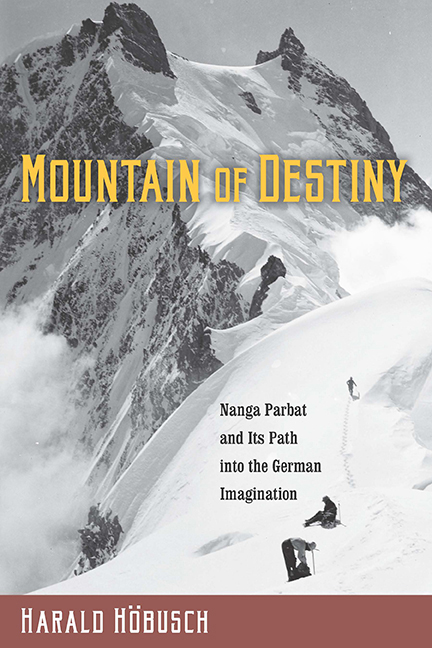6 - Seeing the Unseen
from Part III - Imag(in)ing the German “Mountain of Destiny”
Published online by Cambridge University Press: 05 July 2016
Summary
WHILE THE SPRING OF 1945 BROUGHT the end of the National Socialist state on May 8, it did not bring with it the end of the German obsession with Nanga Parbat. For the leadership of the German Himalaya Foundation—Paul Bauer, Ulrich Luft, and Fritz Bechtold—the question arose of how the story of the nation's “mountain of destiny” could be rewritten for an audience in an emerging, newly democratic state with the purpose of keeping alive not only the memory of the deceased but also the hope of a new German expedition to the mountain in the years following the Second World War. Not surprisingly, the three individuals at the helm of the foundation identified the medium of film as a key tool for this purpose, as it had been a major source of income for the foundation in the past. Until 1953, they spent a considerable amount of time and energy to bring these two goals to fruition. Their strategy was threefold: first, to pursue a project initially explored in fall 1940 with the Reichsanstalt für Film und Bild in Wissenschaft und Unterricht (Reich Institute for Film and Pictures in Science and Education; RWU) for the production of an instructional film; second, to attempt the production of a feature-length film, to be based on the footage of the 1934, 1937, and 1938 expeditions; and third, to secure royalties for post–Second World War screenings of the expedition films of 1934 and 1937, Nanga Parbat: Ein Kampfbericht der Deutschen Himalaja Expedition 1934 and Kampf um den Himalaja.
The idea for an instructional film aimed primarily at German schools, initially explored in fall 1940 and further pursued in spring 1941 by Ulrich Luft and Frank Leberecht on behalf of the German Himalaya Foundation, was revisited in the early postwar years and led to a meeting on May 1 and 2, 1947, between Luft and Leberecht and representatives of RWU's successor organization after 1945, the Institut für Film und Bild in Wissenschaft und Unterricht (Institute for Film and Pictures in Science and Education; FWU) in Hamburg. As an undated contract draft resulting from this meeting reveals, the film was to be finished some time during the second half of 1947 and distributed to “schools, universities, adult education institutions, pedagogical academies, and events of youth welfare” in Germany and, “as far as possible,” abroad.
- Type
- Chapter
- Information
- Mountain of DestinyNanga Parbat and Its Path into the German Imagination, pp. 196 - 218Publisher: Boydell & BrewerPrint publication year: 2016



